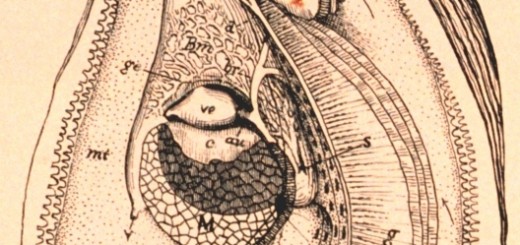Life Cycle, Reproduction, and Harvesting of Pacific Oysters
The Pacific Oyster starts it’s journey when a male and female oyster reproduce in either an underwater substraight or in a broodstock tank. Fertilized eggs will develop util they reach trochophore which  is the stage where the larva is free swimming, translucent, and has a ring of microscopic hairs called cilia. Cilium is found in eukaryotic cells and can sense the changes in the developing oyster’s environment. During the veliger stages the prodissoconch (the first shell show to to right in image D) will form. In the pediveliger stage a muscular organ called a foot will grow and protrude out of the shell. The foot will aid in movement and feeding and the oyster will begin to look for a suitable substrate to attach to. They can spend a few weeks at this stage,
is the stage where the larva is free swimming, translucent, and has a ring of microscopic hairs called cilia. Cilium is found in eukaryotic cells and can sense the changes in the developing oyster’s environment. During the veliger stages the prodissoconch (the first shell show to to right in image D) will form. In the pediveliger stage a muscular organ called a foot will grow and protrude out of the shell. The foot will aid in movement and feeding and the oyster will begin to look for a suitable substrate to attach to. They can spend a few weeks at this stage,  traveling through the water currents eating phytoplankton until they permanently settle as a spat. The spat will become an adult in about three years and can live up to 30 years. With optimum environmental conditions (optimum salinity, food, and temperature) oysters can grow to a harvestable size after 18-30 months. Shellfish farms are able to control environmental conditions and that allows their oysters to develop faster for market.
traveling through the water currents eating phytoplankton until they permanently settle as a spat. The spat will become an adult in about three years and can live up to 30 years. With optimum environmental conditions (optimum salinity, food, and temperature) oysters can grow to a harvestable size after 18-30 months. Shellfish farms are able to control environmental conditions and that allows their oysters to develop faster for market. 
There are a few methods that farms use to harvest oysters. One method is by cultivating the oyster spat, having them set on the ocean floor, and then harvesting them by hand or by drudging (scraping oysters off the bottom which destroys the habitat on the ocean floor). Another method is by cultivating them in a nursery and then suspending them in floating bags where they are easily harvested.
Some oysters will be used for breeding (the broodstock). A shellfish farm will be able to control the salinity and temperature to induce spawning because in the wild oysters take cues from their environment, sensing changes in the water that indicate the changing seasons and when it’s the right time to reproduce (which is primarily in July and Augest).
Crassostrea gigas are protandrous hermaphrodites (they are able to change gender). If conditions are optimal more males will change into females, producing more eggs and more offspring. Oysters know the correct time to reproduce because they are stimulated by the changes in water temperature, salinity and phytoplankton biomass that indicates the time to spawn. Oysters spawn by releasing their gonad into the water forming what looks like clouds of milky smoke surrounding them. An average female oyster can broadcast 50-200 million eggs in a single spawning event. Once one oyster releases it’s gonad the surrounding oysters will sense that and filter in their own. After a spawning event the sperm will fertilize the released egg and the journey of the oyster will begin again.


